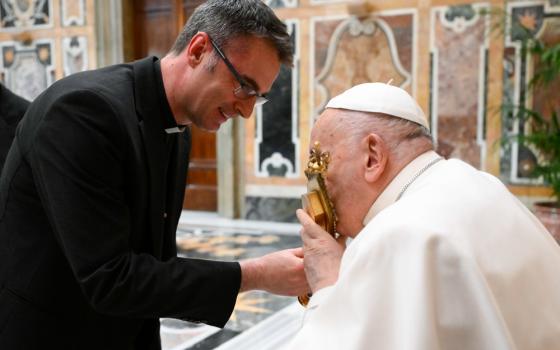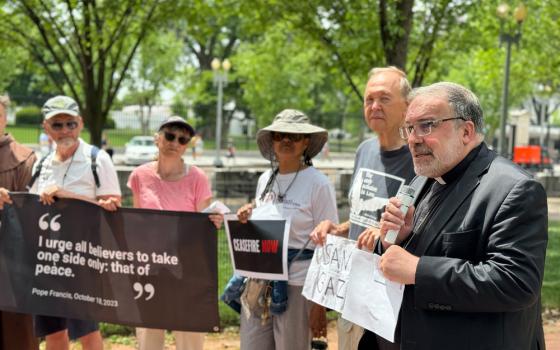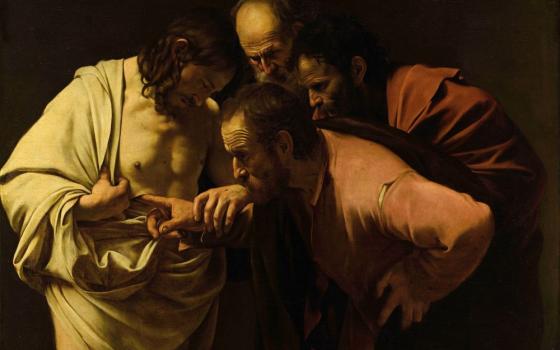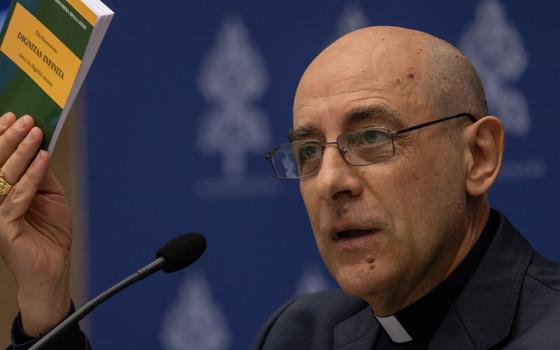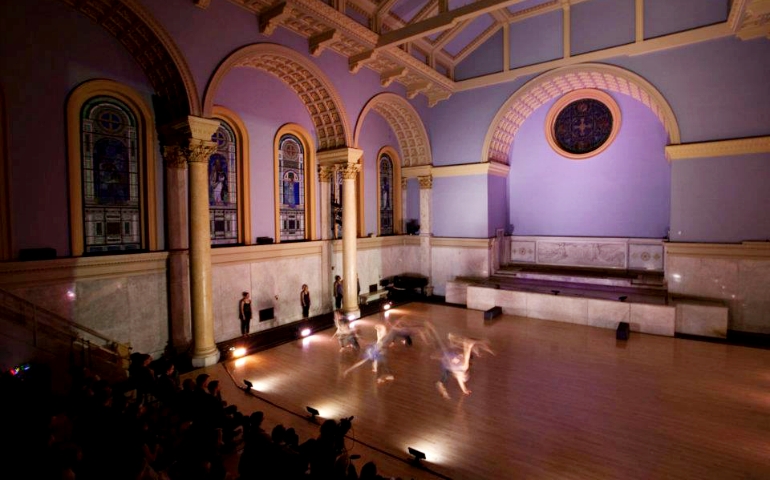
Dancers perform at Judson Memorial Church in New York City. (Courtesy of Judson Memorial Church)
Adaptation is a fundamental environmental thought. It means evolution or evolving. It implies that nature changes and lives and dies. It means that nature is more like an organism than a thing.
Following Pope Francis, many of us have come to argue that all of nature is alive and in a kind of ecological harmony/disharmony with itself. It is unfair to think of nature as all peace when it also involves disruption. Many of us don't go all the way to the Gaia hypothesis, which imagines that the Earth itself is living and breathing, but we get pretty close.
With St. Paul, we imagine that the body is a holy temple — both a thing and a not-thing, both a subject and an object, both matter and spirit. We also call church buildings "temples" or "sanctuaries."
Congregations of all kinds around the country have gone into a new and rapidly accelerating phase. Our declining memberships have met their match in increasing costs for our buildings. More often, they are just too big for us, resembling nothing more than a tiny turtle in a big shell.
The increased pace in the closing of church buildings has become extraordinary in many towns and cities across the country. The temples finally have met their match in the buildings. Membership decline has met its match in empty shells for the spirit and the people. Matter and spirit are richly related.
In his 1998 book The Second Coming of the Church, faith researcher George Barna wrote, "Escaping death after entering the decline phase is very difficult — and the longer it stays mired in decline, the less likely renewal becomes. The only suitable course of action is for the church to embark on an intentional campaign designed to introduce radical reinvigoration (new vision from God, or the integration of a new core congregation)."
Adaptation is a spiritual matter. It is when the spirit sees the material clearly enough that it shifts behavior. We can also think of God the way Franciscan Fr. Richard Rohr thinks of Jesus Christ. He says we enter the Christ at "any time material reality connects with spiritual matter."
This encounter or adaptation reminds me of what rapper Tupac Shakur said in his song "Keep Ya Head Up": "Say there ain't no hope for the youth. And the truth is it ain't no hope for the future."
What would adaptation mean for sacred sites? Which future are we hoping for? The return of the past or the emergence of the new and the different?
Adaptation could mean evolution into multipurpose places. If the church saved the arts in the Middle Ages, maybe today the arts will save the churches. Think music, theater, rehearsal spaces. Why don't dancers have a place to rehearse? Does the Holy Spirit really need to hoard space on weekdays or have empty pews for six days out of seven of its weekly life?
My congregation at Judson Memorial Church removed the pews in 1969, making way to found modern dance in New York City.
Adaptation may also mean more than one congregation in one building — perhaps the greenest move of all. Why not have a Jewish congregation or Muslim congregation in the same building with a Christian congregation? We do at Judson. Once you heat and cool a space, doesn't it make more sense to use it all the time?
Adaptation might mean putting in business incubators and encouraging the unemployed to co-use your Internet connection and your copier and your chairs. It might mean using the offices at night or around the clock.
What are those pews doing there in the first place, attached to the floor like a dagger in the heart of the evolving and adapting Christ? What is sacramental in the first place, if it is not the transformation of the body and blood into the living, acting Jesus? What did the Scriptures mean when they said we are treasure in earthen vessels or that our body is the temple of the Lord?
They probably meant that our shell and our spirits are richly connected.
Many sacred sites and religious spaces are in the process of being desacralized. With rituals. Oddly, they could be re-sacralized by adapting. Seems like a no-brainer to me.
[Donna Schaper is senior minister of Judson Memorial Church in New York City.]
Editor's note: Want more stories from Eco Catholic? We can send you an email alert once a week with the latest. Just go to this page and follow directions: Email alert sign-up.





